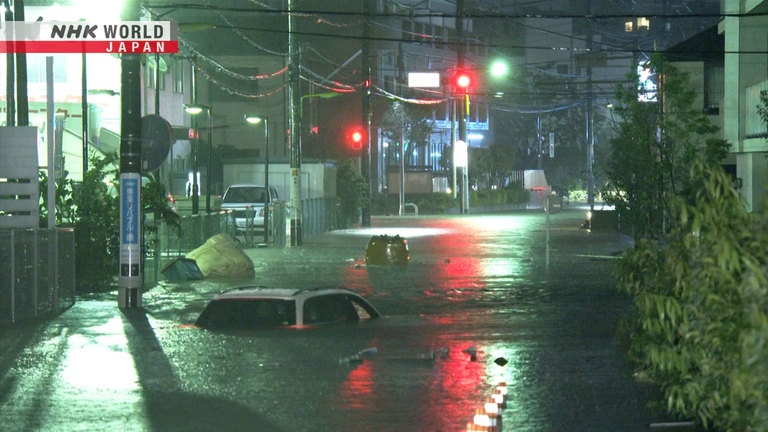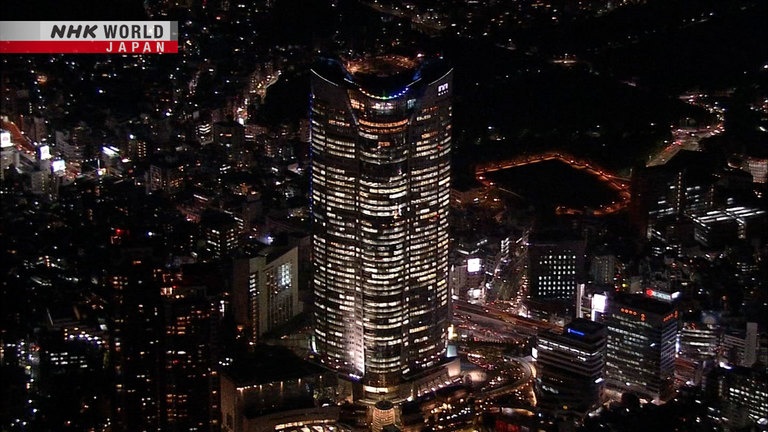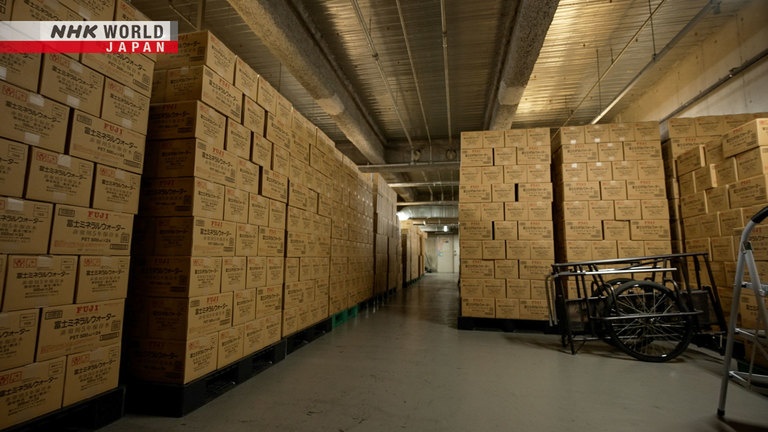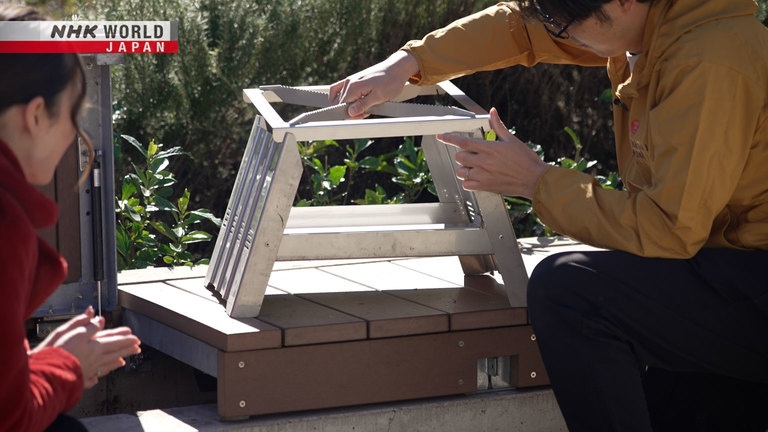#37 Tokyo Metropolis
Tokyo is prone to natural disasters such as earthquakes and flooding. Discover the most advanced disaster prevention technologies hidden throughout the city.




Transcript
Japan has a long history of natural disaster.
Now, the power of science is helping to overcome them.
BOSAI: Science that Can Save Your Life.
Tokyo: it is one of the largest cities in the world.
Business.
Tourism.
Art.
Every year, a total of over 500 million people visit Tokyo.
The number of residents has surpassed 14 million.
Tokyo is one of the most densely populated cities in the world,
and it is also prone to natural disasters, such as earthquakes and flooding.
It is said that there is a 70% probability of a major earthquake directly striking Tokyo within the next 30 years.
Tokyo sits directly on top of a complex tectonic structure made up of various plates.
The area is also prone to flood damage, due to the many rivers flowing in from the surrounding mountains.
The risk has increased in recent years, as heavy rain and typhoon have intensified.
That's why in Tokyo, you'll find the most advanced disaster prevention technologies,
integrated into buildings, parks, and underground spaces throughout the city.
Today's episode is "BOSAI: Tokyo Metropolis."
Discover a side of Tokyo you never knew existed.
The dazzling lights of Tokyo at night.
Among them, there is one particular building that stands out.
The Roppongi Hills tower.
Standing 238 meters high, the Tower houses offices, commercial establishments, and even an art museum.
It is one of Tokyo's most iconic buildings.
This structure, in fact, represents the consolidation of Japan's expertise in disaster prevention technologies.
TOYAMA Kai was in charge of the structural engineering for the building.
The structure was built
based on the concept of creating
"a place of refuge
in the event of a disaster."
Today, I'll introduce 3 features.
Yes, please.
- This way, please.
- Thank you.
And this place is?
This is the mechanical room.
I want to show you
something in the back.
I hear some noise.
What is this?
It's a damper and is key to protecting
the building from earthquakes.
A damper is a device that is designed to change its shape during an earthquake, to absorb the energy of the vibrations.
In Japan, dampers were installed in high-rise buildings starting from around the 1980s.
At Roppongi Hills, as many as 548 dampers have been put in place to prepare for future tremors.
It's quite big.
Yes, about 2 arm lengths.
Yes.
The dampers demonstrated their high performance during the Great East Japan Earthquake, that struck in 2011.
The magnitude 9.0 earthquake caused intense shaking.
Strong shaking was also felt in Tokyo's high-rise buildings.
However, the upper floors of Roppongi Hills did not experience much tremor.
In a restaurant on the upper floor,
not a single glass of wine fell over.
We have the technology to deal with earthquakes,
so people should feel safe coming to Japan.
This way, please.
What a large storage space!
It's the size of a 25-meter pool.
- Look at the number of boxes!
- Yes.
The supplies include enough food for roughly 100,000 meals, 5,000 aluminum blankets, medicine, baby formula, and diapers.
There are also special meals for seniors, people with allergies, as well as halal food.
We've agreed with the local government
to accommodate 5,000 people.
We've prepared enough food and water
to last 3 days.
What is the third bosai feature
of Roppongi Hills?
It's our very own system called
the Disaster Management Portal.
How does this Disaster Management Portal work?
When a large-scale disaster occurs, damage can be expected at various locations inside the facility.
For example, a massive earthquake may cause people on the top floor to fall over and get hurt,
there may be a fire in a restaurant, or people could get trapped if the elevators stop.
It would be difficult to identify all the damages that occur simultaneously in such a large building.
The Disaster Management Portal System was developed to address such issues.
The system gathers data on the extent of damages, stockpile,
and conditions in and around the facility to ensure a swift response.
Our primary concern is the safety of people.
Are people trapped?
Is there elevator damage?
This is what the system will tell us.
The building was built to serve as
a refuge during disasters.
I hope it will continue to play that role
for the community.
Today's episode is "BOSAI: Tokyo Metropolis."
Some of the secrets to protecting this city from disasters can be found underground.
- "Hello."
- "Thank you for having us."
"Thank you for coming."
This is MUKOUYAMA Kimihito, the manager of this construction site.
I'm told that the secret to protecting
Tokyo can be found underground.
Yes, let me show you.
It's hard to imagine what's down there.
You can look forward to it.
We'll take this elevator.
Oh, an elevator.
It's really deep!
We're headed 40 meters down.
Stepping out of the elevator, there was a vast space before us.
What is this place?
This is an underground
flood control reservoir.
A flood control reservoir?
When a large amount of rain falls in a short period of time due to a typhoon or torrential rain,
it can overwhelm the drainage system, causing water to overflow onto roads and buildings.
That is why massive underground spaces were created to temporarily store water.
The water is then released into the rivers or the ocean, after the rain subsides.
This is the front of the tunnel.
We've walked quite a bit.
How long is the tunnel?
This is about 700 meters
from the entrance.
How big is this massive tunnel?
The inner diameter is 12.5 meters.
It would be able to handle rainfall of up to 75 milimeters per hour.
How exactly is the tunnel being made?
When the tunnel is complete,
it will be the largest flood control reservoir in Japan, with a capacity to store 1.43 million tons of water.
In front of us is the tunnel boring machine.
A tunnel boring machine!
A tunnel boring machine is a special machine used to excavate tunnels.
At this site, they are using a giant machine with a diameter of over 13 meters.
Meanwhile, various measures are being taken to ensure the safety of the many people living above the construction site.
To prevent the ground from collapsing
during excavation,
water is applied on the tunnel face
to maintain a balance of pressure.
When digging into the ground, the weight of the earth and groundwater causes the soil to collapse.
Here, the machine pumps slurry in the direction that it is digging.
This is the way they prevent soil from collapsing.
At the same time, segments are assembled into a ring shape, on the inner side of the tunnel, to prevent ground collapse.
Currently, construction is underway with the goal of operating the 13.1-kilometer underground tunnel as soon as possible.
The government is spending approximately 100 billion yen on this project.
Tokyo has a colossal facility underground designed to protect the city from flooding.
This facility cannot be rebuilt, so
we're making it to last over 100 years.
Measures for disaster preparedness can be found even in everyday places.
We're at a nice spacious park.
I hear there are special features for disaster prevention hidden throughout the park.
Let's go and look for them.
- Hello.
- Hello.
Can I help you?
I was looking for disaster prevention
features in this park.
It must be the stove bench.
A stove bench?
I'll show you.
That looks like an ordinary bench.
Wow! That's so easy!
Yes, it turns into a portable stove.
A folded stove is stored inside the park bench, and it can easily be assembled.
There are eight stoves in the park, and during disasters,
they can be used to prepare meals for people who have come to evacuate.
In addition, there are wells that can pump water when the water supply is cut off,
and even a power generator that can last for more than 72 hours.
A number of disaster preparedness features can be found hidden throughout the park.
- Japan faces many disaster risks.
- Yes, that's right.
I hope to share these technologies
and ideas with others.
Tokyo is one of the most popular destinations for tourists.
Behind this glamorous city, we found cutting-edge measures being taken to prepare for disasters.
We hope to see you all in Tokyo one day! Goodbye!